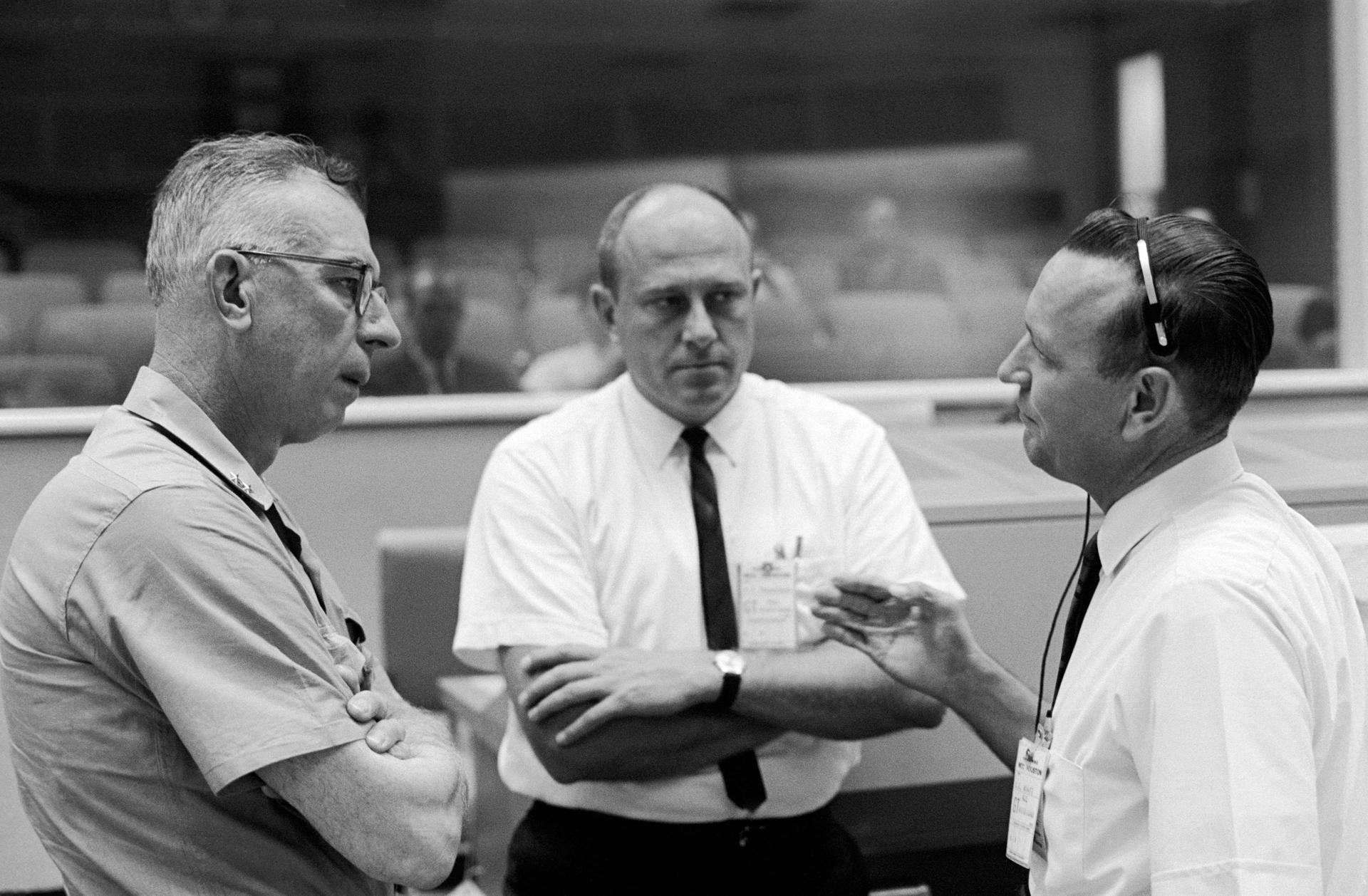And then it was all over.
After the drama of Apollo 13, the final four human missions to the Moon in 1971 and 1972 flew smoothly. With each successive, increasingly routine landing, astronauts made longer forays out onto the dusty lunar terrain and delved deeper into the scientific secrets hidden there.
By the time the crew of Apollo 17 returned to Earth in the Command Module America, much of the country had stopped noticing. During a CBS News program about the final human mission to the Moon, Walter Cronkite asked the rocket scientist who led development of the Saturn V rocket, Wernher von Braun, why the public had become so blasé about spaceflight just a couple of years after the first human landing.
“I think it’s the excitement of the new,” Von Braun replied. “It’s like getting married and being married. The love is still there, the excitement is still there, but it’s no longer the honeymoon.”
In retrospect, humanity’s incursion into deep space was astonishingly brief. The first mission to send astronauts around the Moon, Apollo 8, launched on December 21, 1968. The final lunar spacecraft splashed down in the Pacific Ocean on December 20, 1972. It had taken modern humans 200,000 years to develop the technology to go to the Moon, and then we exercised that capability for precisely four years before reverting back into a single-world species.

For von Braun and many others who worked on the Apollo program, NASA’s honeymoon days flew by all too quickly. Decades of discouragement followed as all the energy spent on deep space exploration, and all the momentum of Apollo, slowly ebbed away. Although it may not have been apparent to most, this process actually began before the Eagle landed in 1969, when the space agency began its long struggle to find a suitable encore to the Moon.
Even in 2018, it has yet to find one.
A Navy man
Having lived through all of this, the headlong rise of NASA and its gradual fading away, Bob Thompson is angry about it even today. At the dawn of NASA, Thompson was tasked with "recovery"—the long list of complex tasks and even more complex logistics required to pluck spacecraft and people out of the water after splashdown. When Ham the chimpanzee flew into space in 1961, Thompson pulled him out of the capsule after it landed in the ocean. A few months later, when Gus Grissom nearly drowned after his spaceflight, Thompson met the astronaut as he pulled off his boots and sea water poured out. Later, NASA asked Thompson to help find an encore to Apollo, and this has consumed the second half of his long life.
Thompson is now in his 90s. He grew up in a small, southwestern Virginia town during the Great Depression. This village named Bluefield was, in reality, surrounded by black bituminous coalfields. Thompson escaped a gritty future working in them by virtue of a keen mind. Occasionally, in the 1930s, airplanes flew over the rolling hills where Thompson lived and played, capturing his fancy. Without really knowing what aeronautical engineers did, or how they designed aircraft, Thompson decided he wanted to become one.
He graduated from high school early, and in 1941 he enrolled at the Virginia Polytechnic Institute, known as Virginia Tech today. While studying engineering and playing on the baseball team with future Flight Director Chris Kraft, Thompson got his call from the draft board. After earning a bachelor’s degree in 1944, Thompson joined the US Navy. He saw some limited action in World War II as a line officer aboard destroyers, mostly in the Atlantic.
Like Kraft and some of the other bright and talented Virginian engineers of the post-war era, Thompson wound up working for the predecessor to NASA, the National Advisory Committee for Aeronautics, at Langley Field in Virginia. More than a decade later, he still toiled there when the launch of Sputnik forced the United States to get serious about space.
In 1958, a few dozen engineers at Langley were transformed into the core of a new agency, NASA, tasked with an American response to Sputnik. Thompson was soon called upon to join them. He recalls his first meeting with Chuck Matthews, weeks after the task group formed. Matthews had been put in charge of operations, which entailed everything from launching to flying and landing spacecraft. Matthews said Thompson’s name, as a Navy man, had been put forward to run the program to recover capsules from the ocean.
Thompson asked Matthews what that would entail. “Chuck had a pretty candid answer,” Thompson recalled with a laugh. “He said, ‘Well, if we knew, we probably wouldn’t need you.’”
Soon, Thompson was meeting with his former baseball teammate, Kraft, and other young engineers to plot out the flight and landing of a one-person Mercury capsule—discussing where to launch it from, where it would land relative to the surface of the Earth, and if you recovered it, where that would be.
“It didn’t take very long, as I looked at ground tracks, and looked at probabilities, and looked at what we were doing, that this guy could be anywhere from the palmettos around the launch site to the middle of Africa to the Indian Ocean to wherever,” Thompson said. “Recovery was going to be a worldwide activity, run primarily by the Defense Department.”
Thompson understood how the US Navy worked and how to play nice with US Defense ships and their commanders. He would ask for, not demand, their help, and he generally got it. Soon, he was leading recovery operations for the first launches of animals such as Sam and Ham. Eventually, Thompson would manage recovery operations for NASA through the Mercury and most of the Gemini program. He also did much of the planning for Apollo sea operations.
reader comments
42